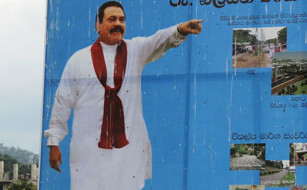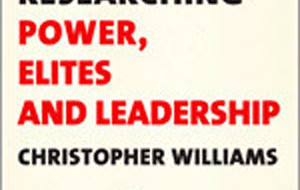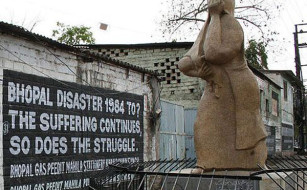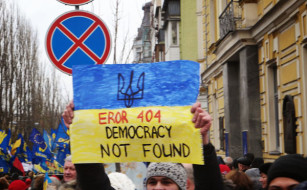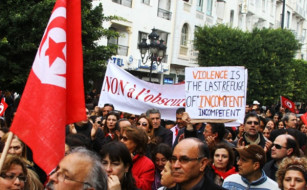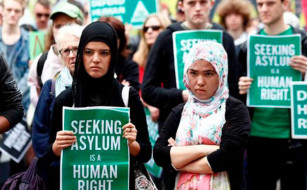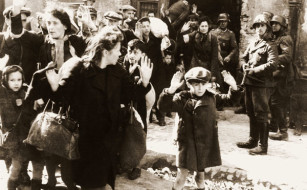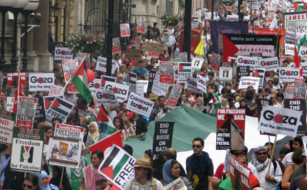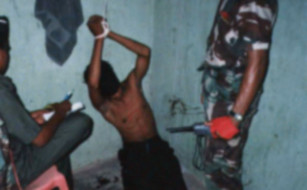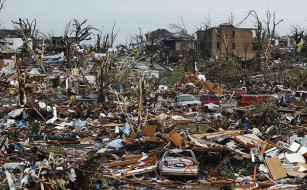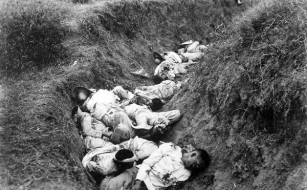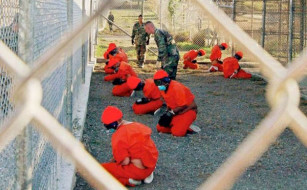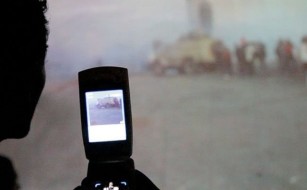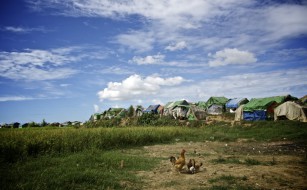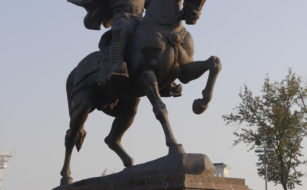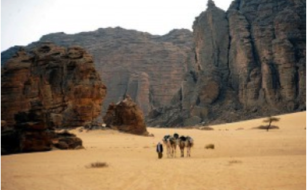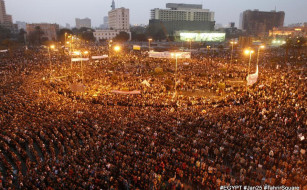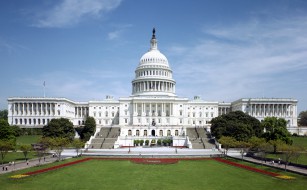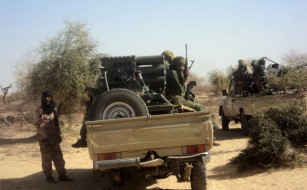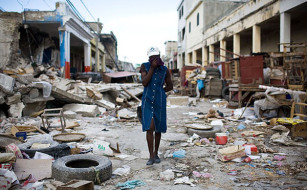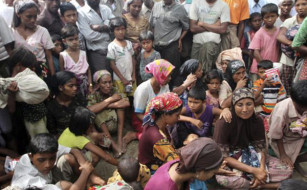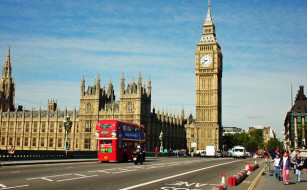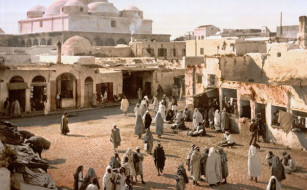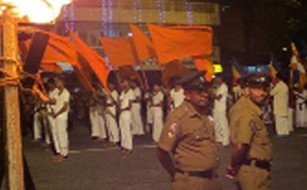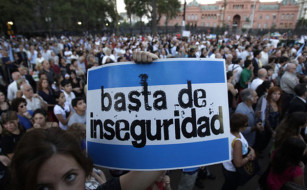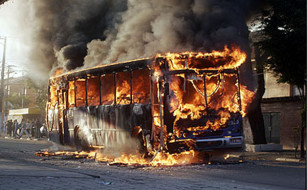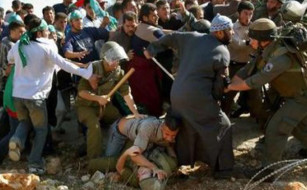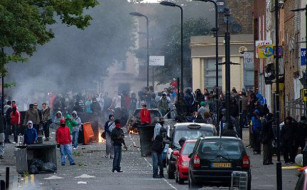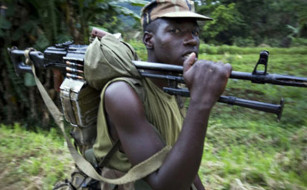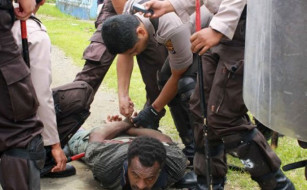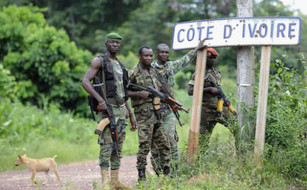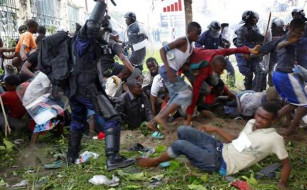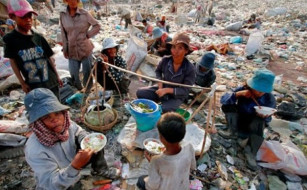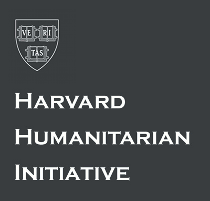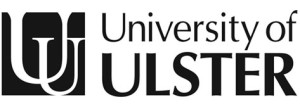The In Amenas “cover up”
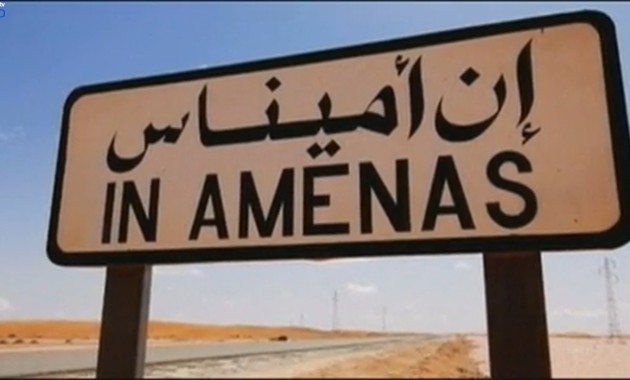
In my previous article on In Amenas, published on this website in May, I spoke of the need for an international enquiry. The terrorist attack on the Tigantourine[1] natural gas plant near In Amenas in the Algerian Sahara in January 2013 resulted in some 80 people, including 30 terrorists, 39 (possibly more) foreign nationals from nine different countries (the UK, Norway, US, France, Japan, Romania, Philippines, Malaysia and Colombia), and at least ten Algerians being killed.
Today, such an enquiry looks more unlikely than ever. Indeed, it is now time that we begin talking of the “In Amenas cover-up”. After all, In Amenas was the biggest killing of “Westerners” since the London bombings of July 2005, and yet the West, notably the US, UK and France, has been going to extreme lengths to ensure that the attack is not investigated or even discussed in the public arena. Attempts in the UK to make media programmes on the event, such as two recent BBC and Channel 4 ‘docudramas’,[2] were screened on condition that they made no reference to the evidence that I have published on this website. In two hours of TV, the name of the terrorist leader of the attack, even though published in Algerian newspaper reports at the time of the attack and in great detail on this website, was mentioned only once, and then in passing.[3]
What is going? Why is one of Al Qaeda’s biggest ever terrorist attacks being swept under the carpet?
Since my last article, some very significant new evidence of Algerian involvement in the attack and Western complicity in its “cover-up” has come to light, to the extent that it is questionable whether we can really even ascribe the terrorist attack to Al Qaeda.
In my two earlier articles on the subject on this website, I described how some 30 or more terrorists attacked the facility in what appeared to be an attempt to take foreign nationals hostage; how the attack appeared to go wrong; how the facility was soon surrounded by Algerian armed forces; how the situation developed into a 4-day siege; and how Algeria’s forces, on the orders of General Athmane Tartag, the head of the internal security directorate[4] of Algeria’s secret intelligence service, the Département du Renseignement et de la Sécurité (DRS), who had taken command of the situation, fired indiscriminately into the facility, killing all but three of the terrorists and some 39 of their foreign national hostages in what was described as a bloodbath.[5]
The key evidence I set out was that the leader of the attack, Mohamed Lamine Bouchneb, had close relations with the DRS, and that evidence revealed his DRS handler as being none other than General Rachad Lallali (a.k.a. “Attafi”), the most senior DRS General under the overall DRS boss, General Mohamed Mediène (a.k.a. “Toufik”). This, alongside other evidence, indicated that Algeria’s DRS was almost certainly incriminated in the attack. Now, with further evidence available, I would go so far as to say that the In Amenas attack was almost certainly a DRS operation, but one that was botched.
The problem for Western governments, and the reason why Algeria’s involvement in the attack is being covered up, is that Western intelligence agencies, notably those of the US and UK, are allied to Algeria’s DRS and have worked closely with them for several years in a number of covert operations that are often and misleadingly called “counter-terrorism”.
In this article, I consider three further areas of information and evidence that have come to light since my last article was published in May that lead me towards the conclusion that the West, notably the US and UK, is covering up for a botched “false flag” operation by their ally, Algeria’s DRS.
The three new areas are: (1) the discovery of what appears to be a DRS warning of such an attack, two months before it happened; (2) Algeria’s subsequent dismantlement of the DRS; and (3) evidence and reasons for the “cover-up”.
(1) A warning from Algeria’s DRS two months before the attack
In August, in the course of on-going research into the In Amenas attack, I came across an article in an Algerian newspaper, published two months before the attack, which appeared to be giving a fairly unambiguous warning of the likelihood of an imminent terrorist attack on an oil/gas installation in the region.
The article is not a forgery. It was published in the Arab-language version of El Khabar on November 12, 2012. A precise English translation and the URLs and can be found in Appendix at the end of this article.
The gist of the article is that a 12-man network of terrorists, said to belong to a separatist movement in southern Algeria, and headed by the same Mohamed Lamine Bouchneb who was to lead the attack on In Amenas two months later, had been dismantled by the security forces. At least seven of the gang originated from Ouargla, the main centre of Algeria’s oil and gas industry.
The article goes to some lengths to paint Bouchneb as a seasoned terrorist, drawing attention to his role in a terrorist attack on Djanet airport (in SE Algeria) in 2007 and in the kidnapping of an Italian tourist in the same region in 2010.
The article is ambiguous in that although it implies that all members of the gang had been arrested, it did not specifically say so. Whether Bouchneb himself was actually captured is not clear. The article said those who were captured were transferred to the Chéraga court in Algiers, where they admitted during the course of interrogation that they were planning to attack an oil installation in the region.
The article also stated that the security services had seized (from the group) 1.2 metric tonnes of explosives and an arsenal of weapons.
It went on to say that members of the movement had sought help from drug traffickers and members of Al Qaeda in the Islamic Maghreb (AQIM) to carry out their plan. Mokhtar ben Mokhtar’s name was given as the key person in putting the movement in touch with AQIM.
What I have so far been able to establish about the article is the following:
- The name of the journalist, Hamid Yacine, is a pseudonym. His real name is Boualem Boughamrassa and he is known to work for the DRS.
- The story about the separatist movement is false: there is no such separatist movement in the South. The story about the attack on Djanet airport is misleading, as too is the story about the kidnap. Bouchneb was involved in both, but, in both cases, on the orders of the DRS. The truth about both incidents is published in my second volume on terrorism in the Sahara: The Dying Sahara (Pluto, 2013).
- I have not yet been able to find any trace of the Algiers court hearing mentioned in the article, as one would expect to find in the case of such a serious terrorist operation.
The article raises a number of questions, namely:
If the article was a true story, at least in as much as the security forces had actually dismantled such a terrorist network and arrested its members, why did the DRS and/or Sonatrach (the Algerian state oil company) not warn their IOC (international oil companies) partners in the country, especially BP and Statoil, the operators of the Tigantourine plant near In Amenas, that a terrorist gang was planning to attack an installation in the region?
If Bouchneb was amongst the terrorist network’s members captured, why was he not in detention at the time of the In Amenas attack? If he was not captured, why were the oil companies not warned of his plan, which should have been seen as an on-going real threat, with security being increased at all oil/gas installations in the country?
Why did not the Embassy services in Algiers, or their home intelligence services in London, Paris, Berlin, Oslo or elsewhere, pick up on the article and warn their IOCs operating in Algeria of such a clear danger?
As these Western diplomatic and intelligence agencies do not, in my experience, have sufficient intelligence of their own (i.e. without reliance on the DRS) to know whether this story was true or fabricated, they must explain why they appear to have taken no action on it. Or, did they inform their governments who then ignored it?
If the article was fabricated, as the evidence indicates, why did the DRS write it? The answer, I believe, is that it was intended as a warning (that was either not seen or ignored) to Western countries, especially the US and UK, who by 2012 were seriously questioning their support for the Algerian regime and more especially its DRS.
Let me explain. In the year or two before the Libyan Revolt, relations between Algeria and its western allies were becoming increasingly tense. The reason for that is a long and complex story that I have documented in two volumes on terrorism in the Sahara.[6] The story started in 2003 when Algeria, as the US’ new ally in the global war on terror (GWOT), undertook a major “false flag” terrorist operation in the Algerian Sahara, kidnapping 32 European tourists, in order to legitimise Washington’s launch of a new African or “trans-Sahara” front in the GWOT.
While the 2003 and subsequent “false flag” operations enhanced the Al Qaeda brand in the region (through its regional franchise of Al Qaeda in the Islamic Maghreb – AQIM)[7] and thus helped the US legitimise its GWOT, it placed the US and its allies, notably the UK, on the increasingly slippery slope of countenancing “state” terrorism and all that that entailed. By around 2010, the US and UK, who by then had both developed close “counter-terrorism” alliances with the DRS, were becoming increasingly anxious at the extent to which the DRS had so thoroughly infiltrated AQIM that many local people in the region actually spoke of AQIM and the DRS as one and the same organisation. The West was also becoming increasingly anxious about the nature and scale of its new ally’s involvement in an array of criminal activities, notably drug trafficking and hostage-taking, that were leading some analysts to talk of Algeria as a “mafia state”.
The problem of allowing such a dangerous relationship to develop and continue was not simply that it raised the question of US and UK complicity in terrorism, but that both countries had become so dependent on Algeria’s DRS for their regional intelligence that they were unable to discern what was really going on in the region. For Western intelligence services, truth and fiction became conflated in a sea of disinformation. In other words, by around 2010, and probably much earlier, the tail was wagging the dog.
Corroboration of my research into the nature of North African, or rather Algerian, terrorism has been provided by one of the highest possible intelligence sources, John R. Schindler. Schindler is a former US intelligence officer and member of the National Security Council (NSC). He is currently Professor of National Security Affairs at the US Naval War College at Newport, Rhode Island. On July 10, 2012, he published an article entitled ‘The Ugly Truth about Algeria’, which described how Algeria’s DRS, over a period of two decades, has created its own terrorists and used them for their own “state terrorism”.[8]
Schindler’s exposé of Algeria’s DRS and his expressed concerns over the relationship between Washington and Algeria’s DRS lends much weight to the fundamental thesis of my two books on the subject, namely that much, if not most, of the terrorism, both real and imagined, in North Africa, the Sahara and Sahel has been fabricated by Algeria’s DRS in collusion with US and other Western military intelligence agencies.
His article, blew the whistle on counter-terrorism in Algeria and the inadequacies of the US intelligence community in regard to its understanding of the Algerian regime, or junta as he called it, and its DRS when he described how:
“the GIA (Armed Islamic Group) [of the 1990s and the predecessor of the GSPC] was the creation of the DRS; using proven Soviet methods of penetration and provocation, the agency assembled it to discredit the extremists. Much of [the] GIA’s leadership consisted of DRS agents, who drove the group into the dead end of mass murder, a ruthless tactic that thoroughly discredited GIA Islamists among nearly all Algerians. Most of its major operations were the handiwork of the DRS, including the 1995 wave of bombings in France. Some of the most notorious massacres of civilianswere perpetrated by military special units masquerading as mujahidin, or by GIA squads under DRS control.”
By mid-2011, the relationship between Algeria and the ”West” – notably the US and UK, but also France – became particularly fraught, as the NATO allies came to learn that Algeria, its supposed ally in the GWOT, was covertly supplying the Gadhafi regime with substantial support. Then, in the following year, these same countries could do little more than read reports of how the DRS, their partner in counter-terrorism, was supporting the Islamist incursion in Mali.
By the latter part of 2012, the DRS knew that its relationship with these Western countries was coming under review. The El Khabar article, I believe, was therefore written as a warning to the West, reminding it that Algeria was the only country in the region that could really counter terrorism, as evidenced in the capture of this Bouchneb-led terrorist network that was threatening oil/gas installations, and that Algeria was the only country in the region that had the means and the preparedness to fight terrorism. In short, the DRS sought to remind the West that it was the West’s “appointed” gendarme in the region and that it should not abandon it lightly.
If I am correct in this interpretation, then it was a warning that the “West” either ignored, or, because of its own inadequate intelligence, simply failed to see and understand. The result was the In Amenas operation and subsequent massacre.
Sources close to French intelligence have drawn a parallel between In Amenas and Tibhirine. In 1996 seven French Cistercian monks from the Tibhirine monastery (near Médéa in northern Algeria) were kidnapped by the GIA (Armed Islamic Group) during the Algerian Civil War. They were held for two months, and then found dead, decapitated.[9] The truth of what happened has never been revealed, although it is widely believed that the kidnap was organised by the Algerian army and its DRS in cahoots with the GIA, but somewhere the operation “went wrong”. The head of the GIA at the time was a DRS agent, Djamel Zitouni, whose DRS “handler” is believed to have been Athmane Tartag – the same Tartag who led the assault on the “terrorists” at In Amenas. The possible parallel with In Amenas is that foreign nationals would be taken hostage by “DRS-directed” terrorists and then released by the Algerian army, in the same way that 17 of the 32 European tourists taken hostage by the DRS agent El Para in 2003 were “rescued” successfully by the Algerian army at Gharis (S. Algeria) on May 13, 2003.[10] Whatever was planned at In Amenas, as at Tibhirine, “went wrong”.
(2) Algeria’s dismantlement of the DRS
In September (2013), nine months after In Amenas, Algeria began what is appearing to be an almost complete dismantlement (some are calling it a “purge”) of its DRS and the re-organisation of its intelligence services.
There is often confusion about which and how many branches and/or directorates fall under the DRS. There are, in fact, well over a dozen units of one sort or another in the DRS, many of which are obscure and almost wholly unknown. Basically, however, at least until September 3013, there were five main branches. These were:
- The Direction de la Sécurité Intérieure (DSI) under the command of General Athmane Tartag, which embraces the Direction du Contre- espionnage (DCE.).
- The Direction Centrale de la Sécurité de l’Armée (DCSA), under the command of General M’henna Djebbar.
- The Direction de la Documentation et de la Sécurité Extérieure (DDSE) under General Rachid Lallali (“Attafi”).
- The Centre de Communication et de Diffusion [CCD], which is not really a full directorate, but nevertheless immensely influential in that enables the DRS to exercise control over the media and propaganda.
- The less well known “service de la police judiciaire du DRS”, which, although not a full directorate, is increasingly known as the Direction de la Police Judiciaire (DPJ). The latter has become increasingly powerful, feared and well known during the last few years, as it has been in charge of many of the corruption investigations, such as those into Sonatrach and Sonalgaz.
Bouteflika’s “dismantlement” of the DRS began on September 11 (9/11),[11] the same day as he announced a radical re-shuffle of his cabinet, dismissing 11 ministers and moving seven others to new portfolios. The result of the reshuffle was that Bouteflika placed his close allies in all top ministries, leaving the DRS with virtually no political influence amongst Ministers.
With hindsight, we can now see that the first step in dismantling the DRS began in July, almost immediately after President Bouteflika’s return from hospitalisation in France, with the dismissal of the DRS official known only by his pseudonym of “Colonel Fawzi” from his position as chief of the CCD. Fawzi was reported to have been involved in some sort of media-publishing scandal. It now looks as if his dismissal was the precursor of the big moves that were to come.
With the CCD – the DRS’s means of control of the media and propaganda – emasculated, Bouteflika began his “purge” of the DRS on 9/11 with the removal of both the DCSA and the DPJ from DRS control. He placed the DCSA under the command of his close ally, Chief of Staff General Gaïd Salah, who, through that morning’s ministerial reshuffle, was now also Deputy Minister of Defence. Because the DCSA is responsible for the surveillance and protection of the army’s personnel and infrastructure, this move effectively cut the DRS off from any access to or control over elements within the army. This transfer also removed the important Centre Principal Militaire d’Investigation (CPMI) – part of the DCSA and a key cog in the DRS’ control apparatus – from the DRS.
At the same time, Bouteflika also transferred the DPJ to the department of military justice, thus also placing it directly under the control of Gaïd Salah in his capacity as Deputy Minister of Defence.
By the end of 9/11, DRS chief General Mohamed Mediène (‘Tewfik’) had not only lost his previously substantial political power and influence over most ministerial portfolios, but also three of his five ‘directorates’. These latter meant that he no longer had control of the media and propaganda, access to and control over much of the army, including its military investigation centre, and his judicial police. He was left with his two main directorates: the DSI and the DDSE, under the commands of Generals Tartag and Lallali (“Attafi”) respectively.
However, by late that evening, rumours were spreading that Bouteflika was preparing to remove the DRS’ three remaining top Generals: Mediène, Tartag and Lallali.
11 days later, on Sunday 22, it was reported that Bouteflika had terminated the appointments of both Generals Tartag and Lallali. The following day, the Algiers media reported that control of the DSI would be transferred to the Interior Ministry and control of the DDSE would be brought under the control of some sort of structure within the Presidency itself.
Before September was finished, the five main branches of the DRS had been removed from its control, with its three “big beasts” – Generals M’henna Djebbar, Tartag and Lallali – dismissed/retired, and General Mohamed Mediène, who had once called himself “The God of Algeria”,[12] and who until only a few days earlier was regarded by most people who knew Algeria as the most powerful man in the country, in charge of “nothing”.
In a couple of strokes of the proverbial pen, the ailing President Bouteflika had achieved what no Algerian President had hitherto managed, and what many people deemed impossible: he had dismantled the country’s secret intelligence service – the “state within a state”.
The big questions are: how did Bouteflika achieve this extraordinary “coup” against the most powerful institution in the country, and why?
Foreign backing from US , UK and France
The answer to the first question appears to be relatively straightforward: Bouteflika appears to have had the support of both Algeria’s Western allies as well as the Chief of the General Staff and the army’s top commanders.
While the US and UK were both clearly in the fore in wanting the DRS dealt with, the role of France is not so clear. My sources in France believe that the US and UK played the lead roles and that France had little to do with it. while my sources in Algiers are adamant that France played a crucial if not pivotal role.
While we will learn much more about the respective roles of the US, UK and France in the months and years to come, it is the question of ‘why’ Bouteflika dismantled the DRS that is immediately relevant to our concerns with In Amenas.
Why the DRS is being dismantled
The current dismantlement of the DRS could be explained in the context of the long, almost perpetual, history of tension between the DRS (and its former equivalents) and the Presidency. The country’s secret intelligence service has been the bane of all Algerian presidents since Houari Boumediene, and even he had a few issues with it. The nearest any president had so far got to undercutting this “state within a state” was Chadli Bendjedidin 1988 when he broke the service up into two separate commands. But that only lasted a couple of years. In 1992, the DRS arranged the assassination of Mohamed Boudiaf, the country’s effective President, while President Liamine Zeroual actually resigned the presidency in 1998 having failed to remove Mediène.
Many analysts now see Bouteflika’s moves as perhaps the final phase in his own “war” with Mediène. Algerian politics since 2010 have been dominated by the ongoing struggle between the Bouteflika presidency and Mediène’s DRS, with Bouteflika being reduced for much of the last three years to little more than a lame-duck president.
This “war” between the Bouteflika presidency and the DRS may well become the dominant explanation for this episode in Algeria’s history. However, while it has certainly been the main driver of Algerian politics over the last few years, it is only part, and perhaps only a small part, of the explanation for the DRS’ current dismantlement. The real reason is believed to be In Amenas.
Both Algeria’s Western allies, notably the US and UK, as well as the Algerian army, believe that the DRS overstepped the mark at In Amenas. But what mark did they overstep? Two explanations are likely to be given. One, which is more widely known, is that General Tartag’s decision to simply destroy the terrorists, irrespective of the cost in terms of the death toll amongst the hostages, resulted in a bloodbath that might well have been averted had he accepted advice and adopted internationally recognized procedures for handling such a situation. The second explanation, which is less widely known, and is, I believe, the main reason for the “cover-up” that I discuss below, is because it was the DRS that actually instigated the entire operation.
The evidence for that allegation rests largely on the relationship that I have explained in this and my previous article between Bouchneb and his DRS handler General Rachad Lallali. In short, I am alleging that Bouchneb, the leader of the terrorist attack, was a DRS agent.
The evidence for Bouchneb’s relationship with the DRS is not only my own extensive fieldwork in the region, but actual eye-witnesses, one of whom is, I believe, at this moment entering into a witness protection scheme in a European country. This evidence, outlined in my two previous ISCI articles and a number of consultancy reports that I have written on the subject, is known to US and UK intelligence services as well as (I presume) the top echelons of the Algerian army. If Algeria’s top army commanders were not aware of the Lallali-Bouchneb relationship before the In Amenas attack, it has certainly been drawn to their attention since.
It has been put to me that while I might well be correct in my claim that Bouchneb was once a DRS agent, it is quite possible that he had turned against his DRS minders at some point before the In Amenas attack. That is, of course, a very reasonable suggestion. Such patterns of behavior are almost characteristic of people in his position. In this case, however, I think it is extremely unlikely, for two reasons. One is that I was in close contact with local people in the region both immediately before and immediately after the In Amenas attack. These local sources knew Bouchneb well and were adamant that he was still (until his death at In Amenas) “the DRS’s man in the [Djanet-Illizi-SE] region”. The second reason is that if he had turned against the DRS, he would almost certainly have suffered the fate of others who had turned against the DRS. He would have been killed.[13] Indeed, Bouchneb, more than most, because of his association with the killing in the Tamouret training camp (see below), was familiar with what happened to those who contravened, double-crossed or fell out with the DRS.
Thus, on both of these arguments the DRS has been adjudged to have overstepped the mark: both in its disastrous handling of the siege and its botching of its “false-flag” operation that lead to the siege. The outcome has been enormously damaging to both Algeria’s international reputation and its economy.
From the West’s perspective, it has always been understood that the DRS’ relationship with “terrorists” groups, such as the GIA, GSPC and now AQIM, has involved Algeria’s oil and gas facilities being “off limits”. That is why there has never been an attack on these facilities, even during the course of the “Civil War” of the 1990s. The fact that that “agreement” broke down at In Amenas, albeit possibly through a botched false-flag operation, has led the West, especially the US (with the UK stepping into line), to reach the conclusion that the DRS had “passed its sell-by date”. Hence, the backing of the US, UK and, I believe, also France, for Bouteflika’s extraordinarily bold moves.
The Algerian army has had an additional reason to want the DRS dismantled. This is because the DRS officially – at least on paper diagrams of the Algerian state structure – is just a branch of the army, but had grown under Mediène to be its controller. The army was sick and tired of being under the DRS’ thumb. It may also have felt that the Tamouret operation, explained below, had gone too far. The main line of DRS control of the army had been through General M’henna Djebbar’s DCSA (Direction Centrale de la Sécurité de l’Armée). This is probably why the DCSA was the first of the “big three” directorates (army, internal and external security) to be taken away from the DRS and placed directly under the control of the army, with both M’henna Djebbar and seven of his top colonels (who could have caused trouble in the army) being dismissed.
In a recent discussion with colleagues about these extraordinary moves, it was suggested that as Bouteflika was unable (because of his recent stroke and disablement) to make such radical changes himself, there must be some new or previously unknown political power operating behind the scenes. My answer is that that power is the Algerian army, which, perhaps because of its own dislike of the DRS, or perhaps because of its disapproval of the damage that the DRS under Mediène has done to Algeria, has thrown its substantial weight behind the Bouteflika presidency. [14]
(3) The “cover-up”
I can think of no terrorist attack on this scale since 9/11 that has received such abysmally poor coverage from the international media and less attempts to explain and investigate the perpetrators of the attack and their motives for undertaking it.
There are two very straightforward and related reasons for this. One is that the international media are very badly informed on Algeria. Given their broad lack of knowledge of the nature of terrorism in the Sahara, there is not a great deal they could do by way of assessment and critical analysis of the wholly inadequate and at times clearly fabricated reports being offered to the world by the Algerian authorities. The other is that the incident unfolded, because of the highly controlled reporting conditions in Algeria, in an almost total media and information blackout.
In addition to those two reasons, which made it very difficult for even the more serious media to get to grips with what was going on, there has been and still is a “cover up” by almost all official bodies in the countries involved of not only what went on at In Amenas, but, more significantly, who might have been behind the attack and why. Within the UK, as in the US and France, enquiries at all official levels are being met with near silence. It is as if a sense of “omertà” – a code of silence – has engulfed all government agencies involved, with the establishment media falling dutifully into line.
From my meetings and discussions with members of the families of both survivors and those who died at In Amenas, it is patently clear that they are being kept in the dark by the very same authorities that should be investigating the incident and the deaths on their behalves. Most of those whom I have spoken to believe that information about how their loved ones died has been withheld from them, so much so that they believe that the authorities are engaged in a “cover-up”.
In the UK, the official explanation for this “omertà” is that the coroner has called for a police investigation, which, in turn, has been held up by Algeria’s reported refusal, or excessive recalcitrance, to cooperate with the investigation. The families have been led to believe that much of the key forensic evidence has either been destroyed by the Algerians or simply not handed over.[15] As a result, the inquest date has already been postponed to November 2014, almost two years after the deaths, with the high likelihood that it will be postponed still further. Therefore, all parties associated with the investigation – government, police, lawyers and the oil companies – are using the pretext of the ongoing police investigation and the delayed coroner’s inquest for not saying anything.
Over the last few years, Algeria has positioned itself at the forefront of the fight against terrorism. It has done this very publicly, in such international fora as the UN, as well as in a range of regional bodies that it has either set up or in which it has taken the lead role. In these very public, international counter-terrorism roles, Algeria has portrayed itself as a lead player in the GWOT and, in so doing, allied itself very closely to Western countries such as the US, UK, Canada and others. For example, in early 2010, Algeria and the UK set up a joint committee on counterterrorism, designed to meet every six months alternately in London and Algiers.[16]
So why, given this high profile international image, is Algeria not cooperating in what it has been advocating, and why has no pressure been placed on Algeria to cooperate in the investigation by those very same allies – the UK and US – whose nationals were killed at In Amenas?
There are two answers. The first is because Algeria’s DRS played a double role in the In Amenas massacre. Not only did General Tartag order the massacre, when a range of other internationally advocated options might well have saved the lives of the hostages, but there is evidence, as I have put forward, that the DRS may even have instigated the entire, “botched” catastrophe.
I believe it is particularly because of this second reason that Algeria has failed to cooperate in making available the crucial forensic and other evidence.
The second answer is because the West, notably the US and UK, not only knows how badly Algeria, its close ally in the GWOT, mishandled the siege, but also that there is evidence of DRS involvement in the attack on In Amenas. This places the West, especially the US and UK, in an extremely awkward position. Indeed, if all this came to light, especially in the context of their unhealthily close relationship with the Algerian regime and its DRS over a long period of time,[17] the US and UK could be deemed as colluding in terrorism.
In fact, the problem for Algeria’s Western allies could become even more serious than that. The reason for this is because an investigation into the relationship between Mohamed Lamine Bouchneb, the leader of the In Amenas attack, and his alleged DRS handler, General Rachid Lallali, would very quickly open up questions about the nature of the AQIM training camp at Tamouret[18] in Southern Algeria. This is because a key eye-witness to the Lallali-Bouchneb relationship would reveal that the two met frequently in the Tamouret training camp.
Tamouret was ostensibly an AQIM training camp deep in Algeria’s Sahara desert. However, it was run and provisioned by Algeria’s DRS, along with their top agents in AQIM, notably Abdelhamid abou Zaïd and Yahia Djouadi. Eye-witness evidence reveals that both Mokhtar ben Mokhtar, who is alleged by the Algerian authorities to have master-minded the In Amenas attack, and Bouchneb, who led it, were frequent visitors. My own fieldwork evidence in the region suggests that the camp was established around 2005, possibly 2006 and closed, or rather moved across the border into northern Mali, around 2009, possibly 2008. Eyewitness evidence indicates that the camp may have contained up to approximately 270 trainee “terrorists” at any one time.[19] The majority were Algerians, but eyewitness evidence reveals that “trainee jihadists” came to the camp from across the Arab-Muslim world: Tunisia, Morocco, Libya, Egypt, Nigeria, Somalia, Yemen and even Central Asia.[20]
From eyewitness accounts, it would appear that many hundreds, possibly thousands, of “terrorists” from this array of countries were trained in Tamouret between 2005-2009. One eyewitness is able to identify many of the trainees by their nom de guerre and to identify and name photographs of many of El Para’s original team. He is also able to identify many of the high-ranking army and DRS officers who visited the camp on an almost daily basis, including General Rachid Lallali who was seen meeting with Bouchneb, who also visited the camp, on several occasions. He described how guns and ammunition were delivered directly from Algerian army depots, as well as through arms dealers. He was also able to give precise details of training, particularly killing techniques, the most common of which was throat-slitting (égorgement), or what he called in Arabic al-mawt al-baTii’ (‘the slow death’). He described how an average of 2-3 persons were executed in training every 3-4 days, with those killed including army officers and soldiers who had presumably stepped out of line or were deemed ‘suspect’, as well as ‘civilians’ or ‘common criminals’, as he called them, from the prisons. These latter, I believe, comprised many of les disparrus, the thousands who disappeared at the hands of the regime in its ‘dirty war’ of the 1990s. It would appear that hundreds of people, possibly thousands, were killed in this way. Thanks to the eyewitness accounts, a number of graves containing relatively recent body remains have been located and recorded photographically.
It is inconceivable that the existence of Tamouret was unknown to Western intelligence agencies, given their close working relationship with the DRS, not to mention US satellite surveillance. That raises the question of why the governments of these intelligence services did not act on this information.
I obviously cannot answer that question. However, it is known from eyewitness accounts that the DRS operated an ID system in the camp, although the technology used – biometric (iris recognition), finger printing or DNA – is still not known. It must be presumed that such IDs were passed on to Western, presumably US and/or British, intelligence. There is evidence of such cooperation. In 2002, Algeria agreed to hand over some 1,400 names (of “terrorists”) to the US. More recently, in 2012, data from a mobile phone belonging to a Tuareg caught by AQIM in Mali just north of Timbuktu while preparing a rescue attempt on AQIM-held hostages was on the desk of MI5 in London a few days later. The Tuareg identified some of the Algerians in the AQIM camp as DRS, suggesting that the DRS, which was provisioning AQIM in Mali, was the agency that transferred the phone data to London.
The evidence that we have of Tamouret suggests that the Algerian DRS, working with the knowledge of their Western allies, established and managed an Al Qaeda training camp deep in the Algerian Sahara whose purpose may have been to collect the IDs of potential jihadists from all over the Arab-Moslem world. If that was the case, then Tamouret may well have enabled the West and its allies to identity networks of potential jihadists right across these countries – and perhaps beyond. If that is correct, it might explain the relative success of Western security against “Al Qaeda-style” terrorism since Tamouret was established. However, if the West did have access to such valuable data, then it would appear to have been derived from a system that can only be described as the mass murder of many hundreds, possibly more, innocent Algerians, as well as the murder of many of the recruits who came to Tamouret and were unable to undergo the training.
A full investigation into In Amenas will inevitably lead to Tamouret, because that is where there is witness evidence of Lallali’s and Bouchneb’s relationship. However, the West can never afford the truth of Tamouret to come out. That is why In Amenas will never be subject to a full and proper enquiry – at least for a very long time.
This is why, I believe, the US and UK – have given their support to President Bouteflika in dismantling the DRS;[21] why the establishment media has effectively been “warned off” the subject; why Algeria is being “protected” in its recalcitrance to cooperate with the UK police investigation and why the UK coroner’s inquest has been kicked into the very long grass.
APPENDIX
Translation of the El Khabar article of November 12/13, 2012
Al-Khabar [the Report] “Veracity and Credibility”
Tuesday, 13 November 2012 AD, corresponding to 28 Dhu l-Hijja 1433
- Cell prepared explosion at oil installations to force authorities to negotiate
- Security dismantles the backbone of terrorist organisation that planned secession of the South
- Plan hatched in Mali desert. Execution launched in Wargla [Ouargla] quarter. Discovery of 12 quintals [647 kg] of explosive substances and ammunition.
The security services specialising in counter-terrorism have lodged a thick dossier with the judiciary, which concerns a cell composed of 12 people falling under heavy suspicion of having set up a connection with the Al Qaeda organisation, with the aim of executing a plan to attempt the secession of the South from the other regions of Algeria. The organisation that led this attempt is called “The Desert Movement for the sake of Islamic Justice”.
Algiers: Hamid Yasin
A source apprised of the dossier’s details for “Al-Khabar” has related that [the operation] uncovering “The Desert Movement”’s activities was concluded last autumn in the Wargla region, from where seven of the 12 accused hail, several of them living in one quarter of the city of Wargla. The same source explained that the organisation calling for secession built its plan on the thinking of the “Movement of the Sons of the Desert”, which appeared years ago, launched the idea of secession, and then vanished in 2007, after the security services were able to win elements within it over to a truce. It ended with the arrest of seven, and others’ acceptance of peace.
Among the most important aspects of what is known of the organisation’s activities is the occurrence of the attack on Djanet Airport in 8 November 2007, [which] resulted in damage to a military transport aircraft of Alyushin type. This Movement returned anew, according to the source, but with connections to “Al Qaeda in the Land of the Islamic Maghreb” [AQMI]. The source that its leader is an Algerian of the desert code-named “Al-Tahir Abu A’isha” [Tahar Bou Aicha], whose real name is al-‘Amin Bin Shanab [Lamine Benchneb/Bencheneb/Bouchneb], who is described as being one of the supporters of the Al Qaeda organisation in the desert region.
To Benchneb is attributed, according to the file in judicial process, that he prepared bombings of gas pipelines, oil installations and foreign companies operating in the field [i.e. in oil & gas]. The aim was to force the authorities to negotiate with him on the demand for the secession of the desert from the country’s other regions. To carry out this plan, “Abu Aicha” turned to smugglers and his relatives. He charged them with recruiting people convinced of the idea of secession, and with preparing for cooperation with “Al Qaeda”, in entering into confrontation with the authorities. However the attempt failed at the outset because of the arrest of one of the network’s individuals operating in the city of Wargla, called Abd al-Karim [Abdelk(e)rim], 25-years old. From this arrest, it was established that the preparation of the plan for bombings was launched from the Ruwaysat [Roueisat/Ruwaisat] quarter in Wargla. He said while under interrogation by the security services that he had established connections with those dealing in arms, with regard to carrying out the plan.
The source said that the cell, which had adopted secessionist thinking with the help of armed jihadists, increased rapidly. Some of its individuals moved to Tigharghar in the Malian desert, where the organising head of the plan, “Abu Aicha”, is based. They met him, and he explained to them the objective of “The Desert Movement for Islamic Justice”, namely “Making the Algerian authorities that practise discrimination between the country’s North and South hear our voice”. The group’s leader issued orders to his cadres to take pictures of specified oil installations in Hassi Messaoud in preparation for striking them. Thanks to the discovery of phone numbers of people with whom Abdelkrim was in contact with regards to execution of the plan, the security services dismantled the cell. Thanks to information provided by its members, the security services detained more than 12 quintals [647 kg] of Ammonium Nitrate, a substance used in the manufacture of explosives, an ignition fuse 100 metres long, three hand grenades, three Kalashniknov parts, 39 ammunition stores and weapons. Military materiel was discovered in a place about 110 km from the centre of Wargla, close to the National Highway.
It is worth pointing out that the name of Mokhtar Belmokhtar crops up on the basis of the he is the party in “Al Qaeda” who was covering the activity of the secessionist movement with the objective of supporting it. As for those arrested, their interrogation took place at the Chéraga courthouse in the capital, where they were accused of terrorism. The dossier was sent up to prosecutor’s office that issued, on 7 November, a decision to transfer it to the criminal court.
The html (online) version link is still available online at:
http://www.elkhabar.com/ar/politique/309960.html
The PDF version of that date is not directly available for download, but available for reading at:
A French article, published on November 13 by Algerie1.com, gives a slightly modified version of the original article. It can be accessed at:
http://www.algerie1.com/actualite/algerie-un-mouvement-terroriste-separatiste-du-sud-demantele
[1] Sometimes spelt Tiguentourine.
[2] “Terror in the Desert”, BBC, first broadcast 30 August 2013; “Siege in the Sahara”, Channel 4, first broadcast 4 September 2013.
[3] The production teams of both films contacted me and I gave them details of the evidence put forward in this and my previous two articles. I was subsequently informed that neither production could be broadcast if it contained such information. Both films dealt solely with what happened in the plant during the 4-day siege, without any attempt to explain what lay behind the attack. While the Channel 4 film was accurate, the BBC film contained serious factual errors, which supported the Algerian authorities’ explanation of the attack. For example, George Joffe, portrayed by the BBC as “Britain’s leading expert on Algeria”, stated that Mokhtar ben Mokhtar (MBM, Belmokhtar), who, according to the Algerian authorities, had masterminded the In Amenas attack, had taken 32 Europeans hostage in 2003. That was incorrect. It is a matter of public record that the hostages were captured and held by El Para, not MBM. The BBC film ended with a caption saying “Four months later, Belmokhtar’s group attacked a French-owned mine in the Sahara killing 21 people.” That statement is false and seriously misleading. When I lodged complaints over both these falsities to the BBC, I received an arrogant reply telling me to read two attached newspapers articles the BBC had sent me. One, from the Observer-Guardian was unchecked “cut and paste” research, based on Algerian “disinformation”, and incorrect. The other had been completely misread by the BBC; it actually confirmed my statement that 21 people had not been killed at the French-owned mine. A further complaint has been lodged with the BBC and its reply is awaited.
[4] Direction de la Sécurité Intérieure – DSI.
[5] 11 of the hostages were killed in a separate explosion. These 11 had been shackled to the main processing plant. When the terrorists realised that the Algerian army was going to kill them all, they detonated a bomb that killed all 11.
[6] Jeremy Keenan, The Dark Sahara: America’s War on Terror in Africa (Pluto, 2009) and The Dying Sahara: US Imperialism and Terror in Africa (Pluto, 2013).
[7] The Al Qaeda franchise in the Maghreb region only came into being in 2006-2007 when the GSPC (Groupe Salafist pour le prédication et le combat) changed its name to Al Qaeda in the Islamic Maghreb (AQIM).
[8] John R. Schindler, ‘The Ugly Truth about Algeria’. The National Interest, 10 July, 2012. Accessed at: http://nationalinterest.org/commentary/the-ugly-truth-about-algeria-7146
[9] Only their heads were discovered; their bodies have never been revealed.
[10] Details of this rescue operation can be found in Jeremy Keenan The Dark Sahara (2009), p. 59f.
[11] The date 11 September (9/11) is highly symbolic in Algeria as it is the anniversary of the resignation of President Liamine Zeroual. Zeroual resigned in 1998 after failing to get rid of DRS boss General Mohamed Mediène.
[12] Jeremy Keenan, “General Toufik: ‘God of Algeria’ “, Al Jazeera 29 September 2010. Accessed at: http://english.aljazeera.net/indepth/briefings/2010/09/201092582648347537.htm
[13] For instance, Lt.-Colonel Lemana Ould Bou of Mali’s State Security had played the role of double agent with the DRS. He was assassinated in Timbuktu on June 10, 2009, three days after he had told compatriots “at the heart of AQIM is the DRS”.
[14] A number of army appointments on July 5, 2013 saw a shift in the political power alignment at the top of the army from what might be called the “DRS camp” to the “Bouteflika camp”. Key amongst these were the retirement of Major General Ahcene Tafer as Commander of Algerian land forces, to be replaced by General Habib Chentouf; the replacement of Major-General Saïd Bey, Commander of Region II (Oran), by General Amar Athmania; and the appointment of Chentouf’s former deputy to replace Chentouf as Commander of Region I (Blida). Tafer and Saïd Bey were both considered as “DRS men”, while Chentouf (head of land army), his deputy (head Region I) and Athmania (Region II) are all loyal to Bouteflika. What we would appear to be seeing with these appointments is the repayment of loyalty by General Gaïd Salah to Bouteflika, who appointed him as Chief of the General Staff somewhat unexpectedly and over the heads of other more likely candidates (such as Saïd Bey) in 2004 on the retirement of Major-General Mohamed Lamari.
[15] For example, the unarmed Paul Morgan, in charge of the security of the bus that came under arrack as it left the complex, was killed by either two or three bullets to the head while sitting in the front passenger seat of his vehicle. His body was seen later by a British police officer helping with the repatriation of the bodies. However, it is only the forensic evidence, so far not made available by the Algerians, which will help answer the crucial question of whether the bullets were fired from a distance or point-blank range. If the later, then they could only have come from terrorists surrounding the vehicle and leaning in it or from the driver or accompanying gendarmes inside the vehicle. But, as (phone) film footage and witness reports appear to discount terrorists surrounding his vehicle, the question of whether he was assassinated by members of the Algerian gendarmerie becomes paramount.
[16] The first meeting of the joint committee was held in Algiers in March 2010, with the second in London on 29-30, November 2010 and thereafter on a six monthly basis.
[17] The US gave the green light to the current Algerian regime’s coup d’état of 1992. Strong UK support for the regime was evident as long ago as 1998, when three cabinet ministers – Jack Straw, Geoffrey Hoon and the late Robin Cook –signed public interest immunity certificates to prevent documents written about Algeria by the FCO and Whitehall’s Joint Intelligence Committee from being submitted in court. At the court hearing, (for three Algerians seeking asylum, but suspected by the UK authorities of being associated with terrorism) the FCO stated that there was “no credible, substantive evidence to confirm allegations implicating Algerian government forces in atrocities.” However, when the undisclosed documents were produced 18 months later on the orders of a trial judge, they completely contradicted what the FCO had told the court. They revealed that British intelligence believed the Algerian government was involved in atrocities against innocent civilians. The question that remains outstanding is why three senior ministers in the new Labour government effectively encouraged the FCO to perjure itself on behalf of a regime and a court case which were scarcely on the public radar. For details see: Richard Norton-Taylor, “Terrorist case collapses after three years.” The Guardian, 21 March 2000. Accessed at: http://www.theguardian.com/uk/2000/mar/21/richardnortontaylor. See Also: Jeremy Keenan, The Dying Sahara: 2013, p. 151f.
[18] Tamouret is a pseudonym, used to help protect against the destruction of evidence.
[19] It was this camp that provided the core of Abou Zaïd’s AQIM group that moved, with the direction and support of the DRS, to the Tigharghar Mountains of northern Mali in 2008-9 and which formed the hard core of the Islamist insurgency in Mali through 2012.
[20] An article in Algeria’s DRS-controlled newspaper El Khabar (“Terrorists from Tuareg and Western Sahara join al-Qaeda fiefs.” El Khabar 15 July 2008) actually gives a similar head count and composition of an unnamed Al Qaeda camp in the region. The article was presumably published to boost Washington’s propaganda, which, at the time, was making much ado about Al Qaeda training camps in the Sahara.
[21] Evidence of the close relationship between the Algerian regime, US and UK intelligence services is that US, British and Algerian intelligence officials met at the DRS’ Beni Messous headquarters in Algiers on 17 September, just six days after Bouteflika began the “purge”.




